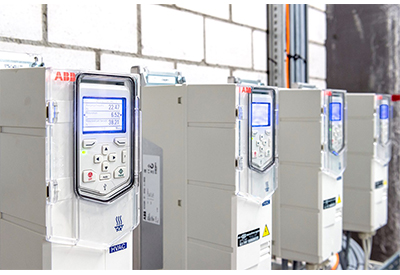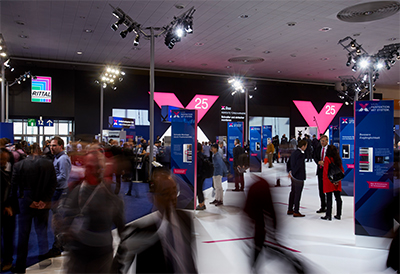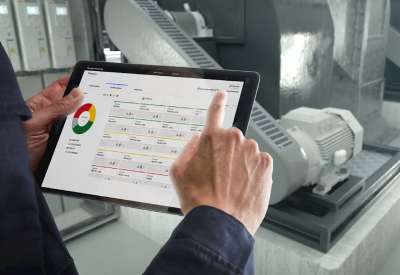Keeping Data Centers Cool

November 2, 2020
ABB provides data centers with solutions to ensure continuous availability while helping to improve performance in a productive and sustainable way. In the first of a series of articles on data centers, they take a look at keeping centers cool while reducing energy consumption.
Data centers are, in essence, the “brains” of the internet. They process, store, and communicate the data needed for the countless information services the world relies upon every day: everything from streaming movies, social media, banking, online shopping, or researching. And growth of data passing through data centers has been explosive and will only continue to increase.
In order to run the IT equipment that they house, i.e. servers which execute the digital transactions that we rely on, data centers require enormous amounts of electric power. Because servers emit heat when they are working, the centers also need power to keep those servers cool enough to function reliably.
But did you know that as much energy is needed to run the centers cooling systems as is needed to run the computers and their memories? In fact, the data side of the data center needs some 40 percent of the total energy, the cooling side needs another 40 percent of the energy. The remainder of the data center’s energy use is for the power supply and the communication equipment.
Data centers are estimated to consume about 1 percent of the globally available electricity and the energy demand of data center is predicted to grow significantly over the coming years. Yet while data exchange has increased, so has data center efficiency.
ABB is helping with this increased efficiency by reducing energy consumption in parts of the data center, including the high cooling demand.
Air conditioning is critical for server operation due to IT equipment’s sensitivity to heat, humidity and dust. Central chillers including compressors, circulation pumps, and condenser fans are critical to the process and reliable control of the cooling system is needed. Yet this is also an area where a lot of energy can be used much more efficiently than today by bringing in ABB’s latest technology.
ABB variable speed drives (VSDs) control the pumps, fan and compressors much more efficiently than throttling or bypass valves, and, on average, secure 20 to 60 percent energy savings for the air conditioning system. VSDs also substantially improve the data center’s Power usage effectiveness (PUE).
PUE is the ratio of the total power consumed by a data center to the power consumed by the IT equipment. The more efficient the data center’s engineering networks, the closer the PUE is to 1. According to Uptime Institute, the data center industry average PUE for 2019 was 1.67. This means that for every 1.67 watts of electricity drawn by the data center, only 1 watt is being delivered to the IT equipment. ABB’s VSDs help maintain a favorable environment to avoid server failures and maximize IT equipment uptime, while optimizing energy consumption in data center cooling.
In addition, ABB offers digital services. ABB Ability Condition Monitoring and Predictive Maintenance can provide a detailed overview of data center cooling system components, including drives, motors and pumps 24/7. Securing the operational transparency helps identify technical issues early, extends product life and reduces energy losses from malfunctioning equipment.
Clearly there is an eminent need to look into all areas of energy demanding elements of a data center. ABB is active in many of these areas and together with strategic digital partners like HPE, IBM or Microsoft ABB is helping to meet the highest levels of infrastructure reliability and redundancy to sustain continuous operation. Stay tuned for additional articles in the series to learn more about how other ABB technology is being used in data centers.







